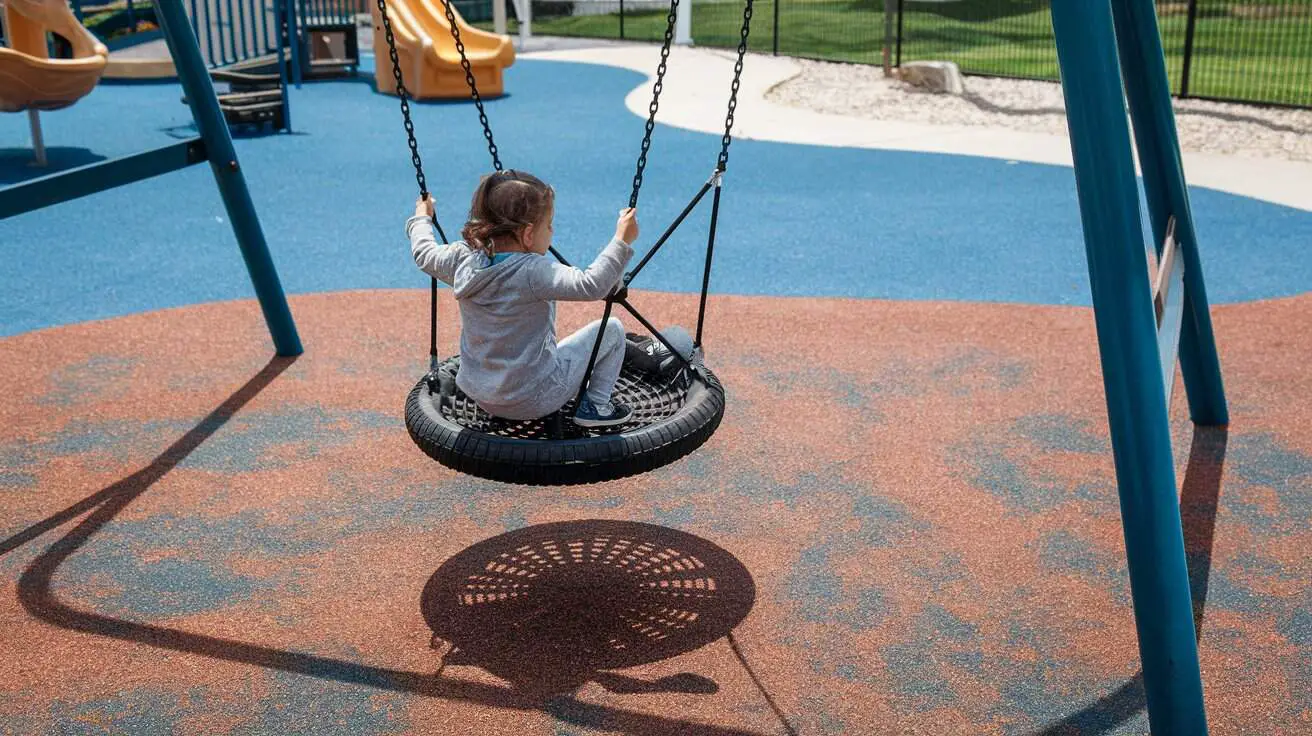
There’s just something about watching the kids run out barefoot into the backyard and having a proper place to play. A good outdoor playground doesn’t have to mean a giant jungle gym — but it does need a safe surface, especially if your garden gets muddy or the ground is uneven. That’s where rubber mulch comes in.
Whether you’re working with a small corner or a full backyard playground setup, this guide will show you how to use rubber mulch to create a safe, long-lasting, and low-maintenance play space that still looks lovely.
Why Choose Rubber Mulch for a Playground?
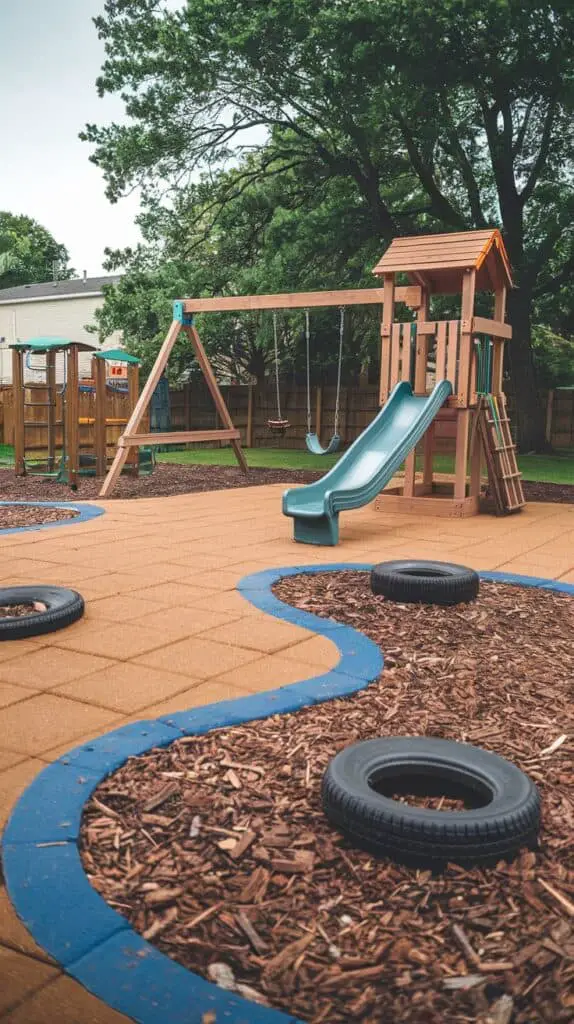
If you’ve ever picked kids up from school and noticed the soft bouncy floor under the swing set — that’s rubber mulch. It’s made from recycled tires and acts as a spongy, impact-absorbing surface that’s way safer than concrete, and way tidier than regular wood mulch.
Here’s why I love it for family gardens:
- It doesn’t blow away like bark mulch
- It dries fast (no more soggy play area after rain!)
- It won’t attract bugs
- It cushions falls (helpful for toddlers and daredevil climbers)
- It comes in natural colours that look lovely in landscaped areas
You can use it over grass, dirt, or even turf if you’re layering it right. It’s one of my favourite muddy backyard solutions, especially in spots where real grass won’t grow or where your kids always run.
Step 1: Choose a Good Playground Spot
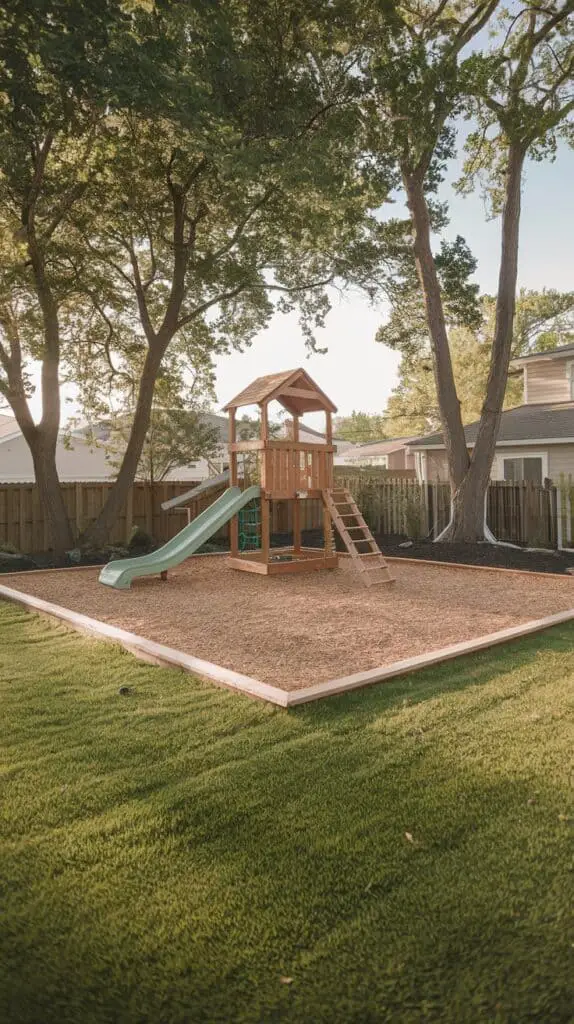
Start by picking a safe, flat-ish part of your yard — ideally where you can keep an eye on the kids. A corner works well, but if your garden is long and narrow, you can tuck the play area along one side.
Make sure the area is away from anything sharp or breakable. If you’re working around trees, rubber mulch is actually great for landscaping around tree bases too — so don’t worry if a tree ends up inside your layout. It helps protect the roots and keeps weeds down, and it won’t rot like wood mulch can.
If you’re doing a full DIY playground build with swings or climbing frames, make sure you allow extra space for movement — especially behind and in front of swings.
Step 2: Prep the Base

You don’t need to rip everything up and start from scratch, but you do want a stable base underneath. Here’s what works best:
- Clear grass, weeds, and debris
- Level the soil or ground surface as much as you can
- Lay down a heavy-duty weed barrier fabric
- (Optional) Add a border — something like timber, stone, or even recycled tires cut in half
This keeps the rubber mulch from spilling into the lawn and helps it stay neat and tidy long-term. If you’re adding mulch to an existing tire playground idea or wood swing set area, make sure the equipment is anchored securely before adding mulch around it.
Step 3: Add the Rubber Mulch
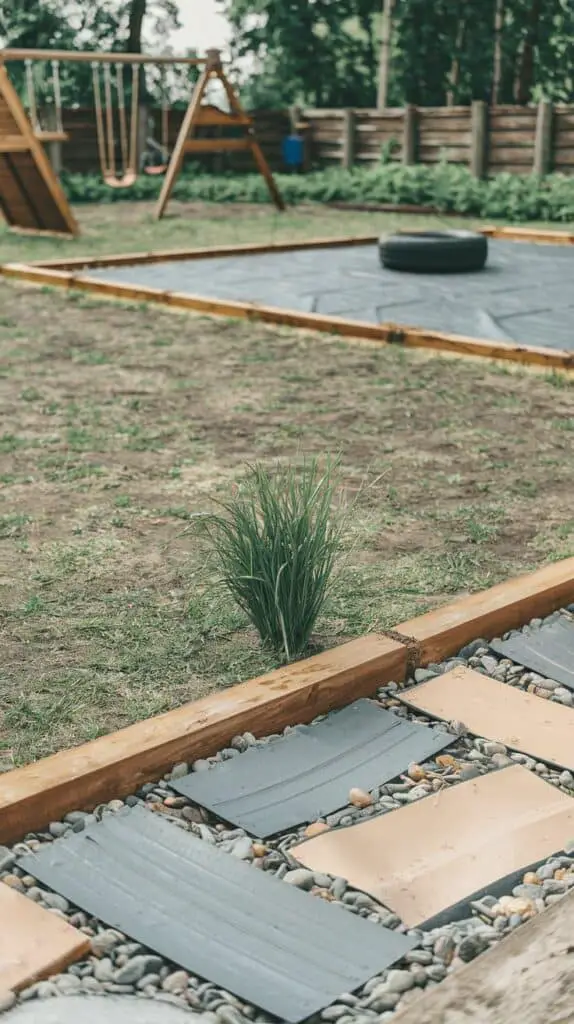
Now the fun (and slightly sweaty) part. Pour your rubber mulch over the fabric layer, spreading it with a rake until you get an even surface.
Recommended depth is around 3–4 inches, which gives you enough cushion for general play equipment. If you’re doing a bigger playground or installing a turf play area with rubber mulch borders, you might want to go a bit deeper.
Tip: A little goes a long way. You can use an online mulch calculator based on your space dimensions so you don’t overbuy.
Also — check that your chosen mulch is playground-safe and doesn’t include sharp metal or debris. Most places that sell rubber mulch landscaping products have versions made specifically for playgrounds.
Step 4: Style It Up
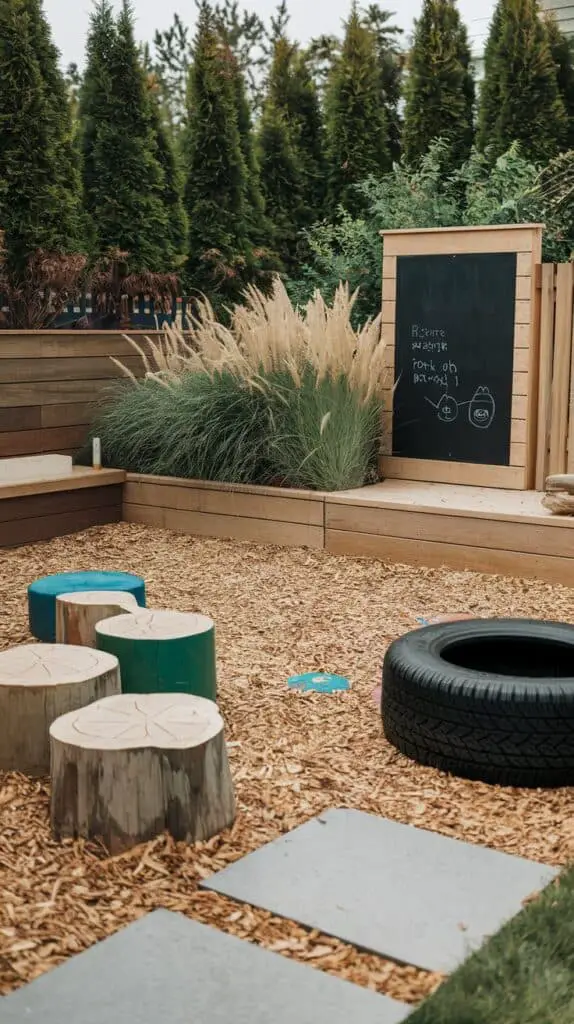
Rubber mulch might be the base, but the play space is what makes it special. You can create a cozy backyard playground corner by:
- Adding a mini mulch patio with a bench for parents
- Decorating with painted stumps or stepping stones
- Putting in a chalkboard wall or mud kitchen
- Planting tall ornamental grasses or low shrubs around the border for a more natural look
- Creating a balance beam or climbing area using cut timber or recycled materials
If you’re going for DIY playground ideas, keep it simple and safe. Kids love imaginative play just as much as slides and swings. Even a single recycled tire filled with rubber mulch and a small canopy can become a magical play nook.
Maintenance Tips

One of the best parts of a rubber mulch playground is how low-effort it is. To keep it looking nice:
- Rake it occasionally to level the surface
- Top up mulch every couple of years if it gets sparse
- Sweep or hose off debris (leaves, dirt, etc.) as needed
- Check the weed barrier every so often for tears
Rubber mulch doesn’t break down the way wood chips do, so you won’t be topping it up every season.
Final Thoughts
If you’re tired of muddy grass, patchy turf, or kids tracking half the backyard into the house — rubber mulch is honestly a game changer. It gives you a defined space for play, it’s easy to clean, and it just makes the yard feel more put together.
Whether you’re building a turf playground in the backyard or just want a cleaner area under the swing set, rubber mulch makes it safer and prettier. Total win in my book.
Let me know if you want to add a chalkboard wall next — or need help figuring out how to keep the cats out of the sandbox. Been there too.
